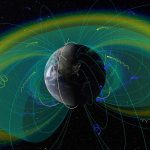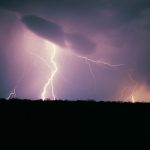Scientists use asteroid data to investigate possible fifth force in the universe
In 2023, NASA's OSIRIS-REx mission returned a sample of dust and rocks from the near-Earth asteroid Bennu.
This remarkable achievement not only provided scientists with...
How Earth’s lightning storms affect “killer” electrons in space
When lightning strikes, it doesn’t just light up the sky — it also shakes things up in space.
A recent study by researchers at the...
Scientists develop world’s strongest ultra-short laser pulses
Researchers from ETH Zurich have developed a laser that produces the strongest ultra-short pulses to date, setting a new world record in laser technology.
Led...
Physics Nobel awarded to neural network pioneers who laid foundations for AI
The 2024 Nobel Prize in Physics has been awarded to scientists John Hopfield and Geoffrey Hinton “for foundational discoveries and inventions that enable machine...
New nanoscale method boosts future memory storage and computing technologies
Scientists at the Department of Energy’s Oak Ridge National Laboratory have developed an innovative technique that could lead to major advances in memory storage...
Thunderstorms are gamma ray factories, and we’re just learning how
In the 1990s, NASA's satellites, designed to detect gamma rays from far-off space explosions, made a surprising discovery: gamma rays were coming from thunderstorms...
Scientists develop new hardware to protect against future quantum cyber threats
Quantum computers are set to change the world, with the potential to revolutionize fields like artificial intelligence, financial modeling, drug development, weather forecasting, and...
Scientists witness tiny water bubbles forming in real time
For the first time ever, scientists have directly observed hydrogen and oxygen atoms combining to form nanoscale water bubbles in real time.
This groundbreaking discovery,...
Scientists use lensed supernova to measure universe’s expansion rate
Researchers using NASA’s James Webb Space Telescope have discovered a rare supernova that is helping to better measure the expansion rate of the universe,...
Scientists discover unique quasiparticles in diamond crystals
A team of researchers from the University of Tsukuba has made an exciting discovery about the behavior of particles in diamond crystals.
They observed a...










